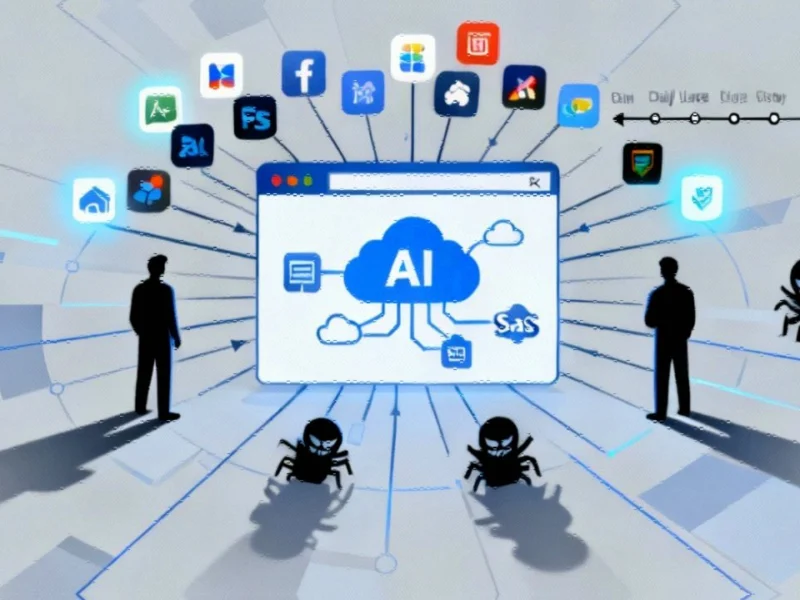Microsoft Transforms Windows 11 Copilot into Multi-Modal Assistant
Microsoft has unveiled a significant evolution of its Copilot AI in Windows 11, moving beyond simple text interactions to create a truly multi-modal assistant that can hear, see, and act on behalf of users. This transformation represents what Microsoft executives describe as “the next evolution of integrated AI” that goes far beyond traditional chatbot capabilities. The announcement comes as part of Microsoft’s broader AI enhancement strategy across its product ecosystem.
Yusuf Mehdi, Microsoft’s Executive Vice President, emphasized during a recent press briefing that we’re witnessing a fundamental shift in how AI integrates with computing. “We’ve seen the first evolution of AI in the form of chatbots,” Mehdi stated. “We’re on the cusp of the next evolution, not just in the chatbot, but integrated AI.” This integration manifests through three core capabilities: Copilot Voice for natural speech interaction, Copilot Vision for visual understanding, and Copilot Actions for automated task execution.
Copilot Actions: From Assistant to Digital Collaborator
The most substantial upgrade comes through Copilot Actions, which transforms the AI from a passive responder into an active digital collaborator. This feature enables Copilot to perform tasks ranging from basic operations like opening applications and typing to complex multi-step processes such as booking travel arrangements or managing document workflows.
Microsoft has implemented a cautious security architecture for these powerful capabilities. Unlike previous controversial features like Recall, Copilot Actions operates within strict boundaries requiring explicit user permission for every action. The system is confined to a separate “Agent Workspace” with limited permissions and continuous user oversight. Users maintain complete control, able to revoke access or modify permissions at any time.
This approach demonstrates Microsoft’s learning from past security concerns while still pushing forward with ambitious AI integration. The development follows similar industry trends toward more interactive AI systems that can understand and execute complex commands.
Natural Voice Interaction Redefines PC Communication
Copilot Voice represents Microsoft’s ambitious push to make voice interaction a primary method of computer control. The feature is designed to bridge the gap between technical “prompting” skills and practical utility, allowing users to interact with their PCs using natural language rather than specific commands or search terms.
The voice capabilities extend to document management, email searching, file location, and other common tasks that typically require keyboard input. Microsoft emphasizes that voice is an additional input method rather than a replacement for text, addressing potential concerns about workplace disruption or privacy in shared environments.
This voice-first approach aligns with broader industry movements toward voice-enabled computing, though Microsoft’s implementation focuses specifically on productivity rather than general assistant functionality.
Visual Intelligence Through Copilot Vision
Copilot Vision introduces visual understanding capabilities, allowing the AI to analyze what’s displayed on screen and provide contextual assistance. Unlike always-on monitoring systems, Vision must be manually activated through a glasses icon in the Copilot interface, after which users can select specific applications for analysis.
The vision system can provide directions, summarize content, highlight screen elements, and offer suggestions based on visual context. Security measures include limiting simultaneous application access to two apps and requiring explicit permission for each session. The feature initially launches with voice activation but will soon support text-based interaction.
This visual intelligence capability represents a significant step toward more contextual computing environments where systems can understand both user intent and current context to provide more relevant assistance.
Enhanced Productivity App Integration
Beyond the core capabilities, Microsoft has deepened Copilot’s integration with productivity applications including Microsoft 365 apps, OneDrive, Outlook, and even third-party services like Google Drive. This integration enables Copilot to create, edit, manage, and export documents through natural language commands.
The enhanced app connectivity allows users to perform complex document operations without switching between applications or learning specific software interfaces. This represents Microsoft’s vision of AI as a unifying layer across the computing experience, potentially transforming how users interact with their most frequently used applications.
These productivity enhancements come as competing platforms also advance their AI capabilities, creating a rapidly evolving landscape for intelligent computing assistants.
Security and Privacy Framework
Microsoft has implemented a comprehensive security architecture around these new capabilities, learning from the backlash against its Recall feature. The company emphasizes that all Copilot features require explicit user activation and permission, operate within clearly defined boundaries, and include straightforward revocation mechanisms.
The security model includes:
- Explicit permission requirements for every action
- Separate workspace isolation for agent operations
- Limited initial permissions that expand only with user approval
- Continuous user oversight and immediate access revocation
This cautious approach reflects both technical considerations and the evolving regulatory landscape for AI systems. The features are currently available to Windows Insiders, with broader rollout planned for all Windows 11 systems regardless of Copilot+ PC designation.
The enhanced Copilot capabilities arrive during a period of significant AI advancement across the technology industry, positioning Microsoft to maintain its leadership in productivity-focused artificial intelligence.
Based on reporting by {‘uri’: ‘zdnet.com’, ‘dataType’: ‘news’, ‘title’: ‘ZDNet’, ‘description’: ‘ZDNets breaking news, analysis, and research keeps business technology professionals in touch with the latest IT trends, issues and events.’, ‘location’: {‘type’: ‘place’, ‘geoNamesId’: ‘5391959’, ‘label’: {‘eng’: ‘San Francisco’}, ‘population’: 805235, ‘lat’: 37.77493, ‘long’: -122.41942, ‘country’: {‘type’: ‘country’, ‘geoNamesId’: ‘6252001’, ‘label’: {‘eng’: ‘United States’}, ‘population’: 310232863, ‘lat’: 39.76, ‘long’: -98.5, ‘area’: 9629091, ‘continent’: ‘Noth America’}}, ‘locationValidated’: False, ‘ranking’: {‘importanceRank’: 189772, ‘alexaGlobalRank’: 3135, ‘alexaCountryRank’: 2012}}. This article aggregates information from publicly available sources. All trademarks and copyrights belong to their respective owners.



